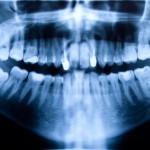
The removal of impacted third molars is a common surgical procedure and the hard and soft tissue management techniques are increasingly being reported to improve periodontal outcomes following surgery.
The aim of this review was to analyse the effects of various flap designs used for impacted lower third molar extraction on the periodontal outcomes of the adjacent mandibular second molars.
Methods
Searches were conducted in the Medline, Embase, Cochrane CENTRAL, and Scopus databases supplemented by hand searches of the journals; Journal of Oral and Maxillofacial Surgery, International Journal of Oral and Maxillofacial Surgery, British Journal of Oral and Maxillofacial Surgery, Journal of Cranio-Maxillofacial Surgery, International Journal of Oral Surgery, and Journal of Oral Surgery.
Randomised controlled trials (RCTs) examining the outcomes of impacted lower third molar surgery using different surgical flap technique reporting periodontal outcomes with a minimum follow up period of 12 weeks were considered. Two reviewers independently abstracted data and assessed study quality using the Cochrane risk of boas tool. The primary outcomes were change in probing depth (PD) and clinical attachment level (CAL)
Results
- 8 RCTs (6 split-mouth, 2 parallel) involving a total of 224 patients were included.
- 2 studies were at high risk of bias, 1 low risk and 5 unclear.
- All of the studies used standard triangular flaps in one of their groups against envelope or modified envelope (4 studies) or Szmyd, modified Szmyd, or modified triangular flap (4 studies).
- Overall, the different flap techniques had no significant impact on
- Probing depth reduction; Weighted mean = -0.14mm (95%CI; -0.44 to 0.17), or
- clinical attachment level gain; Weighted mean = 0.05mm (95% CI; -0.84 to 0.94).
- Sub-group analysis suggested that Szmyd and para-marginal flap designs may be the most effective in reducing the probing depth and the envelope flap the least effective.
Conclusions
The authors conclude:-
no compelling evidence arguing for or against the use of a flap of a particular design for impacted lower third molars extraction could be found. Consistent across studies for all of the flap designs was the short-term (2 weeks) increase in PD postoperatively, with the PD returning to baseline values after 3 months.
Comments
Given the large number of third molar teeth removed it is perhaps surprising that so few RCTs have investigated periodontal outcomes following this procedure. Despite an extensive search strategy the authors only identified a small number of small studies. The available studies are also of limited quality, as several did not provide relevant methodological details such as bone removal and suture or randomisation methods. While this review suggests no difference in PD and CAL using different flap techniques these are reported at 3 months and this may be to short a time frame as the meta-regression conducted suggested that follow up period had an impact on findings. More high quality studies are needed to assess the impact of flap designs on periodontal outcomes.
Links
Primary paper
Chen YW, Lee CT, Hum L, Chuang SK. Effect of flap design on periodontal healing after impacted third molar extraction: a systematic review and meta-analysis. Int J Oral Maxillofac Surg. 2016 Sep 3. pii: S0901-5027(16)30179-5. doi: 10.1016/j.ijom.2016.08.005. Review. PubMed PMID: 27600798.
Other references
Dental Elf- 30th Jan 2015
Third molars: risk of future extraction when retained estimated
Dental Elf- 4th Jan 2014
Available evidence for various aspects of surgical removal of third molars is very low to moderate
Dental Elf- 25th Jun 2012

Third molar removal: flap design and periodontal outcomes https://t.co/gNITcJcmsX
[…] post Third molar removal: flap design and periodontal outcomes appeared first on National Elf […]
Third molar removal: flap design and periodontal outcomes https://t.co/A1MwHAqtQK
Does flap design effect periodontal healing after impacted third molar extraction? https://t.co/A1MwHAqtQK
Flap design and periodontal outcomes after impacted third molar extraction? https://t.co/A1MwHAqtQK
Flap design had little effect on periodontal healing after impacted third molar extraction https://t.co/A1MwHAqtQK
Don’t miss- Third molar removal: flap design and periodontal outcomes https://t.co/A1MwHA8Ssa